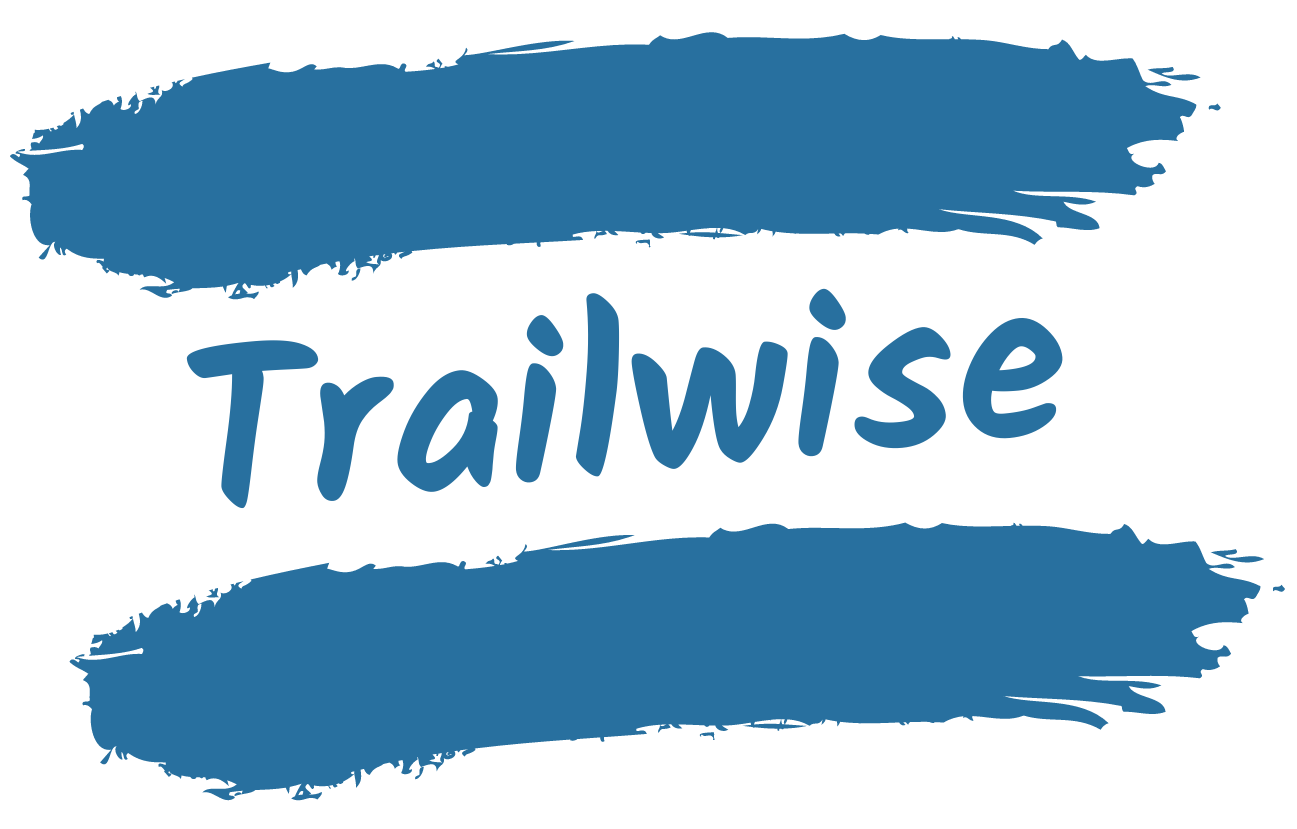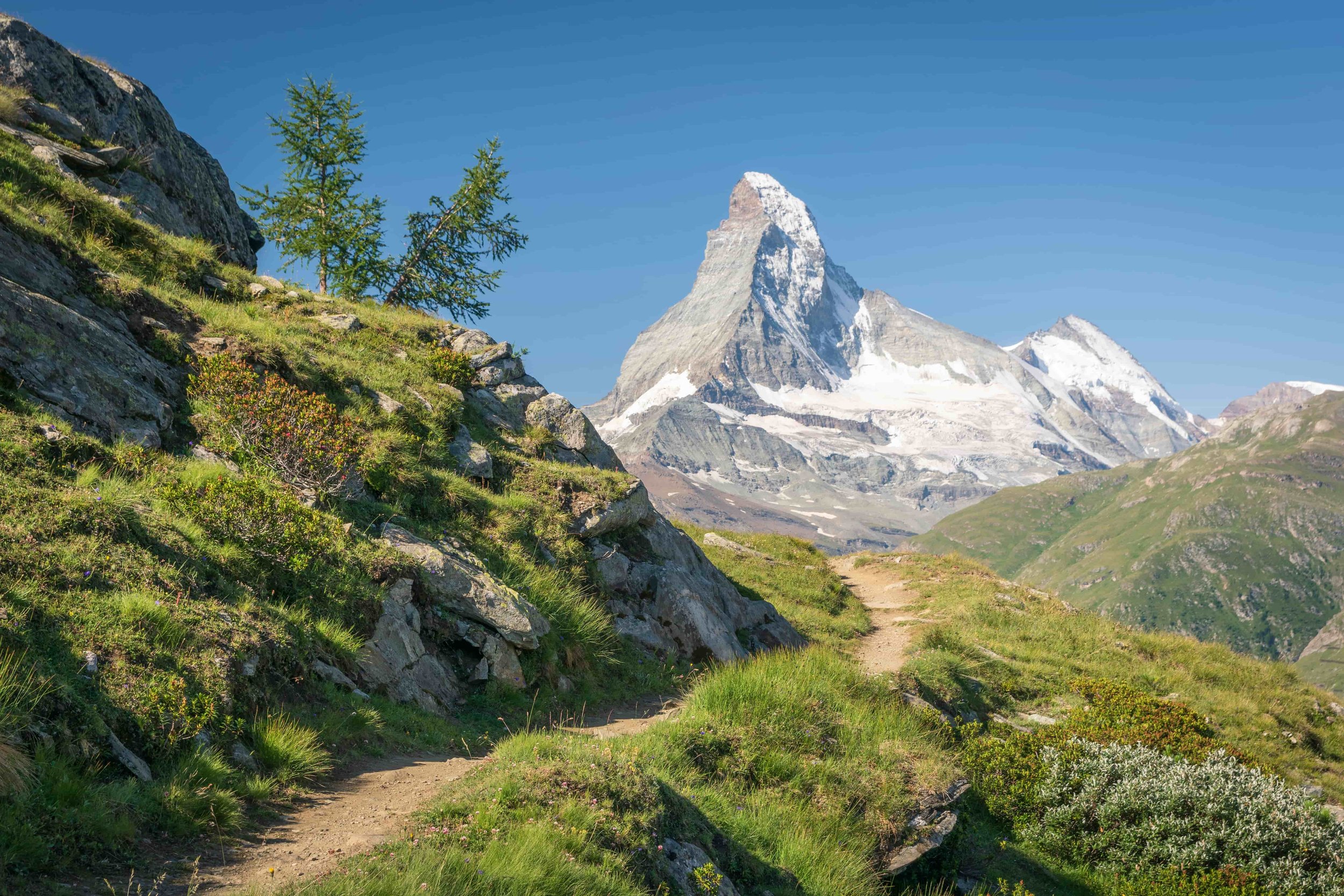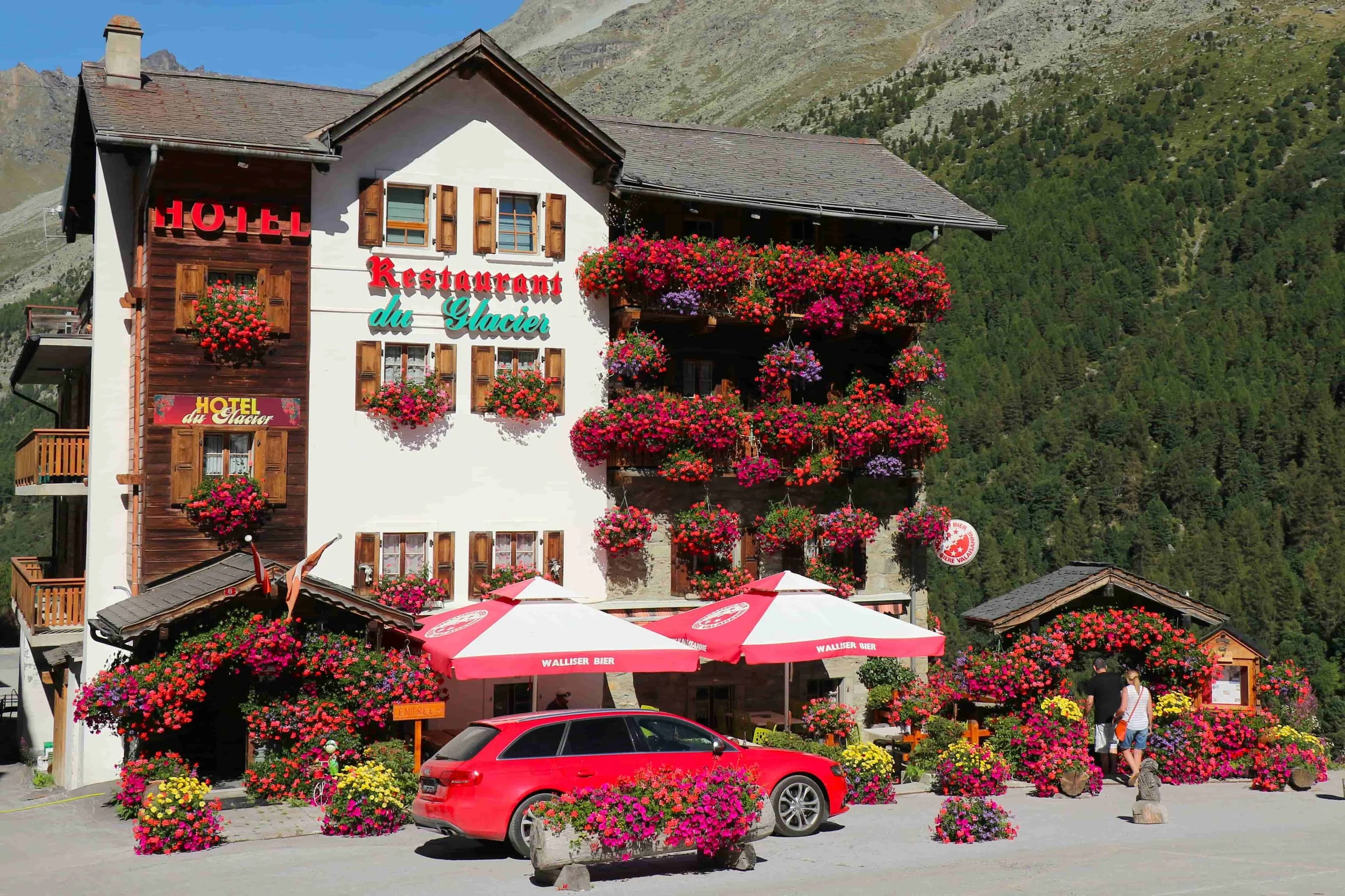WHR Blog: Everything you need to know about the Walker’s Haute Route.
We’ve put together a list of all the usual questions we get asked about the Walker’s Haute Route (along with the answers, of course!). However, if you have a question which isn’t covered below, please don’t hesitate to get in touch, we’ll be happy to help!
Shortcuts
1. What is the Walker’s Haute Route?
The Walker’s Haute Route is a historic trekking route from Chamonix in France, at the foot of Mont Blanc, to Zermatt in Switzerland, in the shadow of the Matterhorn. Its 225 km (140 miles) snake across some of the most spectacular mountain passes of the Alps.
The trail moves from valley to valley, often through remote terrain such as the barren and rocky Grand Désert between Cabane du Mont Fort and Arolla, many miles from the nearest road. Small Alpine villages are dotted along the way, such as quiet and picturesque Arolla, or tiny Gruben which is only populated in the summer months.
The trek crosses the international boundary from France to Switzerland, as well as the linguistic boundary between French-speaking Switzerland and German-speaking Switzerland.
The Walker’s Haute Route is the trekking alternative to the Haute Route, a classic mountaineering route which crosses several glaciers. The Walker’s Haute stays below 3000 m the whole way, and requires no technical mountaineering.
2. How long does the Walker’s Haute Route take?
If you’re looking to cover every step of the Walker’s Haute Route, we offer either WHR-1 or WHR-2 itineraries, which cover the route in 15 or 18 walking days respectively, depending on how much mileage you prefer to walk each day. However, if you don’t have that many days to spare, we also offer our WHR-3 Highlights itinerary which cuts the route down to 12 days, by skipping some sections of the route via bus or cable car.
If you’re short on time, we can also offer part-sections of the trail. All our holidays are completely open to customisation - just get in touch and we’re more than happy to create the itinerary that works best for you.
If you have time, we highly recommend taking a rest day about halfway through the route - the charming village of Arolla is perfect for this.
3. When is the best time to walk the Walker’s Haute Route?
We generally recommend tackling the Walker’s Haute Route between mid-July and mid-September. Before July snow can often block the high mountain passes, and by the end of September fresh snow becomes a risk. Because of this, refuges won't generally open outside of these months (unless you want to come back in the winter on skis, of course!).
Different parts of the summer season have different upsides. July is a good month to see wildflowers blooming in the meadows, and for the highest temperatures. August is usually just as warm, though the summer holidays will mean slightly busier walking trails. September tends to bring more settled and cooler weather, with fewer hikers on the trails.
4. Can I skip sections of the Walker’s Haute Route if planned in advance?
Certainly. We have already designed our WHR-3 Highlights itinerary to do just this - skipping some of the less exciting stretches by bus or cable car to reduce the walk to 12 walking days. If you want to cut down your trip even further, we’d recommend starting or finishing part-way along the trail, rather than skipping sections along the way. Please just get in touch and we can set out all the options in detail.
5. Can I skip or shorten the walking distances on the day if I need to?
On most sections, yes. There are plenty of options for this along the trail, in the form of cable cars, buses, taxis and trains, if you’re feeling a bit tired on the day. For example the 1660m (5450 ft) ascent from Le Châble to Cabane du Mont Fort can be reduced to 956m, 264m or 45m ascent, depending on how many cable cars you decide to take on the day! However, there are a few sections, such as Cabane du Mont Fort to Cabane de Prafleuri or La Sage to Barrage de Moiry which do not have any shortening options.
Please just let us know if you have any queries about these. You will also find all important information on these options in your Trail Doc when you book your holiday - neatly summed up for when you need it!
6. Where should I add rest days on the Walker’s Haute Route?
For a rest day around halfway along the trail, we recommend the charming village of Arolla in the Val d'Hérens. It's a small village, but very picturesque, and with a multitude of pleasant strolls possible.
Much earlier on the trail, there is also Champex. The picturesque village sits overlooking the charming waters of Lac de Champex, which is a wonderful spot for a dip on a warm day. The village has a good variety of accommodation, but still succeeds in feeling quiet, relaxed and authentically Swiss.
And for something about two thirds of the way along, there is Zinal, a larger village with more in the way of shops where you can stock up on kit and supplies. There are also other activities such as mountain biking available, not to mention a small spa!
If you are looking to extend your holiday, we also recommend spending some extra time in either Chamonix at the beginning, or Zermatt at the end of the trail. Both are popular resort towns and amazing bases for other walks and activities in the area - take a look at our Chamonix & the French Alps or Best of the Valais Rail & Trail holidays if you’re considering making the most of a few days in either spot.
7. How tough is the Walker’s Haute Route? How fit do I need to be?
The Walker’s Haute Route is one of the tougher trails that we offer, so you do need a good level of fitness, and we wouldn’t recommend it as a first Alpine trek. It’s a very popular option for those hikers who have walked something like the Tour du Mont Blanc or Alta Via 1 Dolomites already, and are looking for their next adventure.
In terms of distance and ascent, the Walker’s Haute Route is a step up from most treks in the Alps, with most days clocking in at between 1000m and 1500m ascent (3280 to 4920 feet). If these statistics don’t mean much to you, this is probably not the trek for you (yet)!
At 225 km (140 miles) the trail requires 14 to 17 walking days to complete the whole route, so it’s also a longer and more sustained trek than others we offer. We recommend you make sure you’d enjoy a trekking holiday of this length.
Whilst virtually all trails in the Alps are clear and well signposted, there are sections of the Haute Route which are a full day’s hike from the nearest road and civilisation, so you’ll need to be happy being in this kind of remote terrain, and comfortable navigating with map and compass if necessary. Please be aware that there is one section of fixed ladders, at the Pas de Chèvres on the approach to Arolla, which are straightforward but not for those with vertigo.
8. How high does the Walker’s Haute Route go? Is altitude an issue?
The highest point you will reach on the Walker’s Haute Route is 2,987m at the Col de Prafleuri. These altitudes are safe - you won’t feel any significant effect of altitude, and altitude sickness is not a risk. We do however recommend bringing a sun hat and lots of sun cream - sun rays are stronger at higher altitudes and not to be underestimated if you are out all day!
9. Do I need to pre-book accommodation on the Walker’s Haute Route?
Definitely. Certain parts of the trail are popular enough that many accommodations are fully booked well in advance during the summer months.
10. Are there luggage transfers available on the Walker’s Haute Route?
Yes. Luggage transfers on the Walker’s Haute Route are able to access the majority of overnight locations along the trail - so you can hike with a small pack during the day, safe in the knowledge that your suitcase will be waiting for you at your accommodation that night. However, do bear in mind that some refuges along the trail (such as Cabane du Mont Fort, Cabane de Prafleuri and the Europa Hut) are completely inaccessible to vehicles, so you’ll have to do without your luggage on these nights.
We offer luggage transfer as an optional extra for our holidays, so just let us know that you’d like to include this when enquiring with us!
Many of our customers hike the Walker’s Haute Route as part of a longer trip, and choose to leave a suitcase which they won’t need during their hike at their hotel in Chamonix, which we then have delivered to their accommodation at the end of the trail in Zermatt.
11. What are huts / refuges like on the Walker’s Haute Route? Can I get private rooms? Do I have to stay in them?
Refuges/huts are fairly basic accommodations in remote mountain locations. Whilst some are accessible by cable car or rough vehicle track, many are only reachable by foot, helicopter, or mule. This means the level of facilities, and variety of food on offer is limited. Our usual itineraries on the Walker’s Haute Route involve three hut stays, at the Cabane du Mont Fort, Cabane de Prafleuri and Europahut.
However, despite the remote locations the food on offer usually ranges from good to brilliant. In some huts a key feature is the communal dinner - where tables and dishes are shared between you and other guests who have been allocated to the same table. This is where the famous camaraderie between walkers on the trek really comes out - sharing stories from the trail over food and drink.
In terms of sleeping, most refuges have a mix of communal dormitories and private rooms (though private rooms commonly feature bunk beds, not king size beds!). Shared bathrooms are the norm - en-suites are pretty much unheard of on the Walker’s Haute Route! Understandably, private bedrooms usually book up quite far in advance, so we recommend booking early if you’d prefer having one of these.
If you are keen to avoid huts, the Cabane du Mont Fort and Europahut can be feasibly avoided with some changes to the usual route, though given their spectacular location we wouldn’t recommend doing so! The Cabane de Prafleuri is pretty much unavoidable, due to the lack of any other accommodation options in the area.
12. How busy is the Walker’s Haute Route?
Not very. The Walker’s Haute Route does sometimes pass through areas popular with other walkers - namely the first three stages from Chamonix to Champex (which is shared with the Tour du Mont Blanc) and the last two stages approaching Zermatt. But for the majority of the route you will find yourself in much less frequented areas, seeing only a few other hikers each day. On our own trips on the Walker’s Haute Route, we have often gone a few hours at a time without seeing other hikers.
13. What is the weather like on the Walker’s Haute Route?
Temperatures vary by height and season, but to give a rough answer, it usually ranges from about 20 to 30 degrees celsius (68 to 86 fahrenheit) down in the valleys, and 10 to 20 degrees celsius (50 to 68 fahrenheit) up on high points of the trail.
Generally hikers doing the trail will experience mostly warm and dry days, with the occasional rain shower - though sometimes these rain showers can develop into thunderstorms, usually in the afternoons.
It’s crucial to be prepared for all weather conditions - having a waterproof jacket and trousers with you is just as important as your sun hat, sun cream and plenty of drinking water.
14. What do I need to pack for the Walker’s Haute Route?
We have a comprehensive kit list of essential and recommended kit to bring along - just get in touch and we’ll be happy to share it!
15. Should I wear Hiking Boots or Trail Shoes on the Walker’s Haute Route?
This is completely down to personal preference. The most important thing is that you have worn them in with plenty of walking before setting out on the trail. Some hikers find the ankle support of boots to be beneficial over long distances, whilst others prefer the lightweight nature of trail shoes. Whichever you choose, just make sure they have good tread/grip on the bottom. Whilst footpaths in France and Switzerland are well maintained, you are still travelling in high mountain terrain where potential snow patches or wet rocks are likely to occur.
16. What is the best section of the Walker’s Haute Route?
A very difficult question, and depends what you’re looking for! For sheer wow factor, the final two stages as you approach Zermatt are truly spectacular - traversing high along the side of the Mattertal valley with the mighty Matterhorn ahead of you. For remote and beautiful wilderness, the three stages between Le Châble and Arolla, through the rocky and empty Grand Désert are hard to beat.
Personally, we’re also big fans of the three to five stages between Arolla and St Niklaus, which aren’t completely remote, but are very peaceful and pastoral in nature. The trail passes through extensive green and pleasant farmland between mountain passes, and visits quiet villages in the peaceful Val d'Hérens and Turtmanntal valleys.
17. How do I get to the Walker’s Haute Route?
The majority of hikers travelling to the start of the trek in Chamonix arrive from nearby Geneva. From there, there are a number of bus and taxi companies running direct services to Chamonix, with journey times ranging from about 1 hour 20 mins to 1 hour 40 mins. Geneva is very well connected by train to the rest of western Europe, and to the rest of the world via Geneva airport.
From the end of the trek in Zermatt, it’s 4 hours by swift train back to Geneva, or 3 hours 30 mins to Zurich, which is equally well connected by air and rail.
18. Can you just organise this all for me?
Of course! We’d love to take all the hard work out of organising your hike on the Walker’s Haute Route, allowing you to get on and enjoy the hike. Just get in touch and we’ll be more than happy to send you a quotation, and answer as many questions as you might have about the trail.










